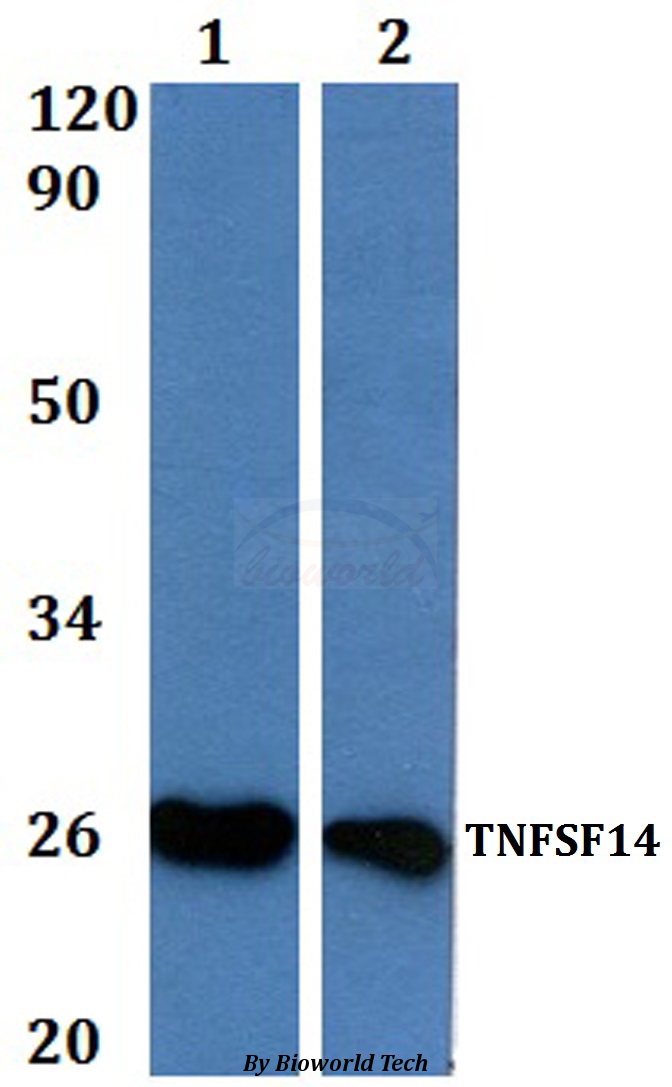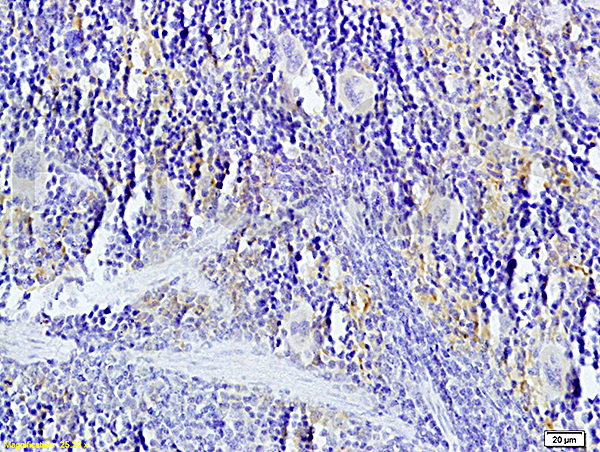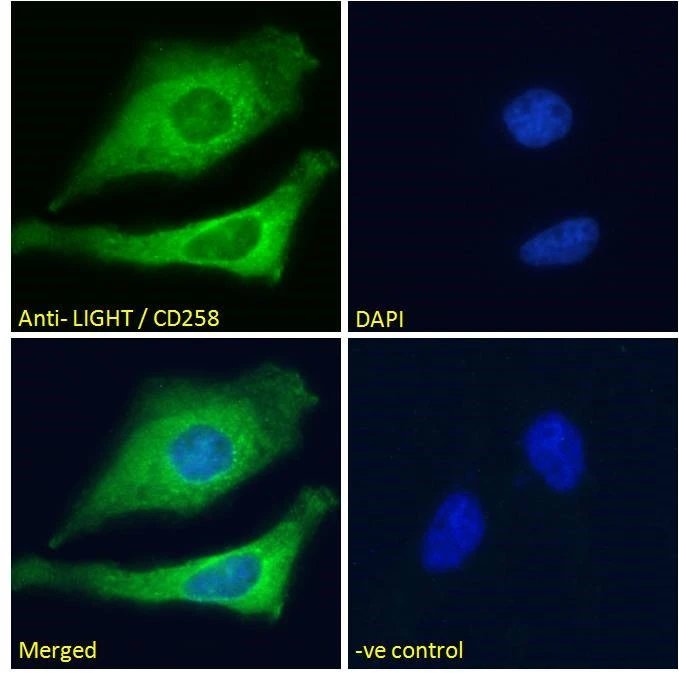
ICC/IF analysis of PFA-fixed HeLa cells using GTX88321 LIGHT antibody, Internal. Negative control : Unimmunized goat IgG Permeabilization : 0.15% Triton Dilution : 10microg/ml
LIGHT antibody, Internal
GTX88321
ApplicationsImmunoFluorescence, Western Blot, ImmunoCytoChemistry
Product group Antibodies
TargetTNFSF14
Overview
- SupplierGeneTex
- Product NameLIGHT antibody, Internal
- Delivery Days Customer9
- Application Supplier NoteWB: 1-3microg/ml. *Optimal dilutions/concentrations should be determined by the researcher.Not tested in other applications.
- ApplicationsImmunoFluorescence, Western Blot, ImmunoCytoChemistry
- CertificationResearch Use Only
- ClonalityPolyclonal
- Concentration0.50 mg/ml
- ConjugateUnconjugated
- Gene ID8740
- Target nameTNFSF14
- Target descriptionTNF superfamily member 14
- Target synonymsCD258, HVEML, LIGHT, LTg, tumor necrosis factor ligand superfamily member 14, herpesvirus entry mediator ligand, tumor necrosis factor (ligand) superfamily, member 14, tumor necrosis factor ligand 1D, tumor necrosis factor superfamily member 14
- HostGoat
- IsotypeIgG
- Protein IDO43557
- Protein NameTumor necrosis factor ligand superfamily member 14
- Scientific DescriptionThe protein encoded by this gene is a member of the tumor necrosis factor (TNF) ligand family. This protein is a ligand for TNFRSF14, which is a member of the tumor necrosis factor receptor superfamily, and which is also known as a herpesvirus entry mediator (HVEM). This protein may function as a costimulatory factor for the activation of lymphoid cells and as a deterrent to infection by herpesvirus. This protein has been shown to stimulate the proliferation of T cells, and trigger apoptosis of various tumor cells. This protein is also reported to prevent tumor necrosis factor alpha mediated apoptosis in primary hepatocyte. Two alternatively spliced transcript variant encoding distinct isoforms have been reported. [provided by RefSeq, Jul 2008]
- Storage Instruction-20°C or -80°C,2°C to 8°C
- UNSPSC12352203


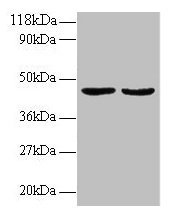
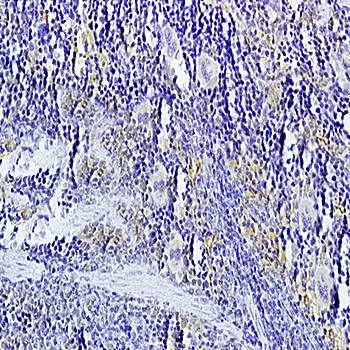

![WB analysis of HEK293 expressing human TNFSF14 using GTX52911 LIGHT antibody [8C34].](https://www.genetex.com/upload/website/prouct_img/normal/GTX52911/GTX52911_20191119_WB_w_23060900_179.webp)

